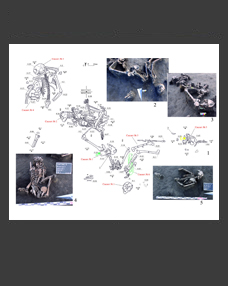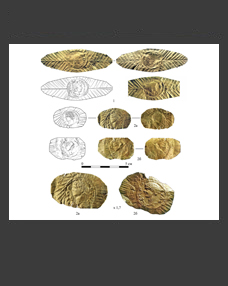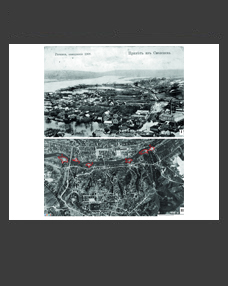Olga E. Etinhof
Institute of Theory and History of Fine Arts Russian Academy of Arts, Moscow, Russia
E-mail: etinhof@mail.ru
Keywords: Rus, medieval Novgorod, princely order, archaeology, church, mural paintings, painting technique, frescoes, attribution.
The article publishes for the first time fragments of frescoes from the earliest church of St. John the Baptist on Petryatin Dvorishche (otherwise, in Opoki) located in Trading district of Novgorod. The first church was founded there by Prince Vsevolod (Gabriel) Mstislavich and rebuilt, according to the chronicle, in 1127–1130. In 2021–2023, excavations in the church were conducted jointly by the Novgorod Museum and the Architectural and Archaeological Expedition of St. Petersburg State University under I.V. Antipov. The results of the excavations have not been published yet. For the first time, archaeologists had a chance to conduct works in the interior of the church and raise the floors of the second church of 1184, under which fragments of ancient paintings survived. Several thousand fragments of frescoes of 1127–1130 were uncovered there. They were transferred to the restoration workshop of the Novgorod State Museum-Reserve. There are few figurative images and ornaments among them, a little more than a dozen. The interpretation of many details, style and techniques of painting in the St. John’s Church in Opoki is strikingly similar to the decoration of the St. George’s Cathedral of the Yuriev Monastery in Novgorod. The activities in the latter were carried out between 1119 and 1130 by order of the same Prince Vsevolod. The few fragments of images of the St. John’s Church in Opoki are of great interest in the context of comparison with the frescoes of the St. George’s Cathedral. They provide a rare case of reliable and multifaceted information about the large-scale activities of the painters’ team of Prince Vsevolod. It includes two quite accurately dated areas of the decoration in the St. George’s Cathedral (the naos and the chapel of the tower), two icons originating from the same cathedral, “St. George” and “Ustyug Annunciation”, and the paintings of the St. John’s Church in Opoki produced by the recent excavations.
DOI: 10.31857/S0869606324030119, EDN: WZNVWP







